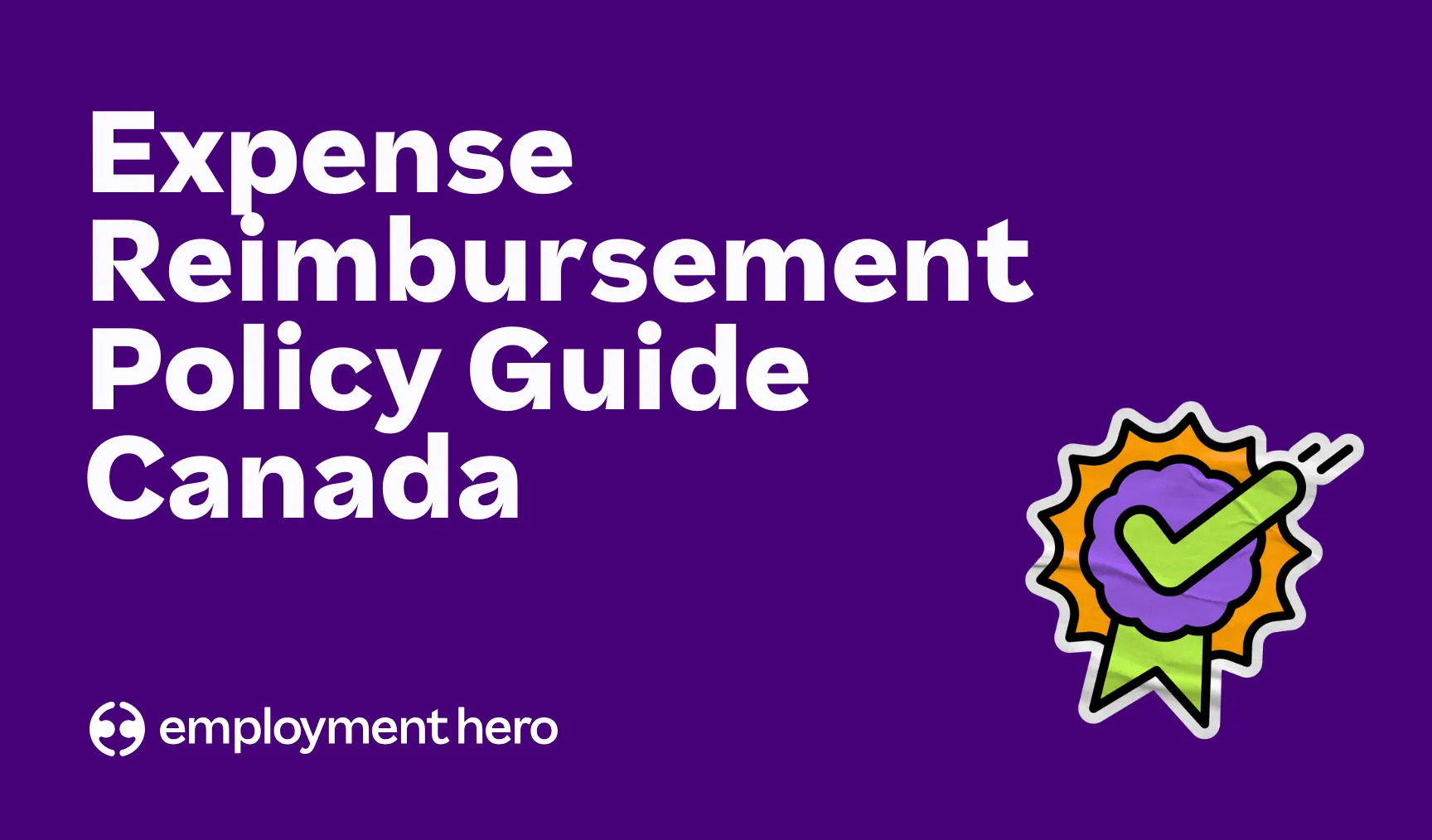Graduate hiring in Canada: Employer toolkit
Published
Graduate hiring in Canada: Employer toolkit
Published

Hiring graduates is not about cheap labour or quick wins. It is about shaping the future of your business while giving someone their first real shot. Canadian SMBs that invest in graduate hiring early build loyalty, grow their own talent and stay ahead of employers still scrambling each spring.
But success takes more than good intentions. You need a plan that matches the academic calendar, meets compliance rules and makes your offer stand out in a crowded market. You are competing with large employers, but you have an edge they do not — real responsibility, faster learning and a team where people actually matter.
This toolkit will show you how to use that edge. It walks through each step of hiring students and graduates in Canada, from building your strategy to creating development pathways that keep talent long after graduation.
Developing a student and graduate hiring strategy
Hiring students without a plan is like starting a race halfway through. Every university and college runs on a cycle, and if you miss it, you miss your shot.
Canada’s recruitment rhythm is predictable:
- Fall (September to November) is prime time for internships and co-ops.
- Spring (January to March) is when final-year students lock in graduate roles.
Show up early. Connect with campus job boards and career centres before everyone else. Interview before the deadlines and send offers while others are still drafting theirs.
And don’t stop at timing. Think about what this generation values: flexibility, learning and purpose. They do not expect perfect employers, but they expect honest ones. When you build a hiring strategy that meets them where they are, you build trust before they even apply.
Establishing eligibility criteria for student hires
Once you’ve mapped out your timelines, it’s time to get the details right. Setting clear eligibility criteria keeps your hiring process fair, compliant and easy to manage. It saves time for both you and your candidates and helps you stay compliant with school partnerships and funding requirements. Knowing exactly who qualifies protects your business and ensures a smoother hiring process from start to finish.
Academic enrolment verification requirements
Check that each student is actively enrolled in a recognized post-secondary program. It is often required for co-op programs or government incentives. It also protects your business if the paperwork is reviewed later.
Setting minimum age and provincial compliance standards
Employment rules are not the same across Canada. Minimum wage, break times and work hours all vary. Make sure your contracts reflect the local standards. If you’re unsure, HR Advisory can help you confirm the details before you post.
Accommodating part-time students with disabilities
Supporting part-time students with disabilities means looking beyond compliance — it’s about creating space for people to do their best work. Flexible scheduling, remote options and thoughtful communication can make a world of difference for someone juggling classes, assignments and a job. When you lead with accessibility, you show your team that inclusion isn’t just a checkbox; it’s a value. Our flexible work policy template can help you put that commitment into practice with clear, supportive guidelines.
Building your value proposition for student recruitment
Students and graduates aren’t just chasing pay. They’re looking for experience that counts, mentorship that feels genuine and work that means something. They want to know their time will matter and that the company investing in them will invest in their growth, too. That’s where SMBs have an edge. You can offer hands-on learning, visibility with leadership and real responsibility from day one — things large employers often can’t match. A clear value proposition that shows how students will learn, contribute and grow will set your hiring program apart on any campus.
Connecting work experience to academic programs
Once you know what sets your business apart, show it where it matters most — in the roles you promote and the stories you tell. If your projects connect to what they study, say it clearly. Show how their coursework links to your business challenges. Spell it out in your job ads so students understand the value before they even meet you.
Highlighting skills development opportunities
Be specific about what they will learn. Name the tools, systemsand responsibilities. Real development beats vague promises every time.
Positioning your organization as a career exploration destination
SMBs are built for exploration. You can give students a front-row seat to how decisions get made and how real work happens. Show them that. It is your biggest differentiator against corporate silos.
Showcasing pathways to permanent employment
Students stay where they see a future. Map out what success looks like after the internship or co-op. Use onboarding software to keep those milestones visible and consistent for every new hire.
Hero tip: When graduates know you take their growth seriously, they become your best recruiters. Their stories sell your brand better than any campaign.
See how it all comes together.
Partnering with educational institutions

Universities and colleges are not gatekeepers — they are partners. Career centres, co-op offices and program coordinators can connect you to students who already have the skills you need.
Show up at career fairs. Offer guest talks. Get on advisory boards. When students see your name across campus, you stop being an unknown employer and start becoming a goal.
Be transparent about expectations, pay and the kind of work they will be doing. Students respect employers who treat them as equals, not rookies.
Creating graduate transition programs
Once you’ve built relationships with schools, you’ll need a plan for what happens after the offer. A structured transition program turns new graduates into productive employees faster and keeps them longer. It gives them clarity, purpose and a sense of progress in those critical first months. When graduates see a clear path forward, they stay engaged, perform better and grow with your business. This is where planning meets action:
Designing entry-level position pathways
Outline what the first year looks like. Define clear checkpoints and growth goals. Use completed probation letter templates to formalize milestones.
Implementing apprenticeship opportunities
Apprenticeships build skill pipelines in technical fields and can unlock wage subsidies. They also show that you are serious about hands-on learning, not just quick fills.
Developing structured graduate development programs
Consistent structure builds confidence. Track goals and reviews with HR software. When new hires know where they stand, they perform better and stay longer.
Hero tip: Regular feedback is one of the strongest predictors of retention. A fifteen-minute check-in can save months of rehiring later.
Managing student work programs
Student work programs can be a win for both sides — fresh energy for your team, real experience for the student. The trick is managing them with intention, not as an afterthought.
When SMBs bring students in without a plan, they often end up juggling training, communication and expectations on the fly. That’s where things fall apart. With structure and purpose, student programs can become a low-risk way to build a future talent pipeline.
Integrating students into existing teams
Pair students with mentors or “buddies” who can answer questions and set the tone. It builds culture faster than any policy document.
Providing meaningful work assignments
Give them tasks that matter. Busywork kills motivation. Real projects build pride and skills you can use later.
Mentoring and supervision best practices
Set expectations clearly and revisit them often. Keep track of training, hours and progress. It protects your business and helps students see their growth.
Timelines and recruitment cycles to know
When you know how to manage your student programs, you can start planning when to launch them for maximum impact. Campus hiring runs on a clock. Miss itand you miss the best candidates.
- Fall cycle (September to November): This is when most universities run their co-op and internship postings. Employers build brand awareness, host info sessions and recruit students who want hands-on experience during winter or summer breaks.
- Spring cycle (January to March): This window targets final-year students preparing to graduate. It’s the prime time to secure full-time hires who can start after exams.
- Start dates: Most graduates begin working in May or September, depending on their program and internship timing.
Start early, even if you’re testing a small program. Plan your outreach and interviews around academic calendars, not business quarters. Use onboarding software to manage offers, start datesand paperwork in one place so nothing slips through the cracks.
Compliance considerations for graduate hiring

Graduate hires are still employeesand every employment standard applies.
Check your province’s rules for minimum wage, overtime and public holidays, as student workers are usually entitled to the same protections as regular staff. Confirm the correct CPP, EI and income tax deductions for student earningsand make sure all records are reported accurately to the CRA.
Review your workplace safety requirements under both federal and provincial laws. If students are on-site, ensure they complete the same orientation and training as your other employees. HR Advisory helps you stay aligned with both provincial and federal obligations so you can focus on running your team.
Download the toolkit
Graduate hiring is not an afterthought — it is your chance to build the team you wish you already had. The businesses that plan early, treat students fairly and invest in their growth become magnets for talent.
Ready to start? Download the Graduate Hiring Toolkit and see how to build a program that keeps the next generation of talent growing with your SMB.
To download the toolkit, we just need a few quick details.
Related Resources
-
 Read more: Expense Reimbursement Policy Guide Canada
Read more: Expense Reimbursement Policy Guide CanadaExpense Reimbursement Policy Guide Canada
Download a free expense reimbursement policy guide for Canadian businesses. Learn how to create a clear, compliant policy for managing…
-
 Read more: The professional development plan Canada’s top teams use
Read more: The professional development plan Canada’s top teams useThe professional development plan Canada’s top teams use
Download a free professional development plan template for Canadian businesses. Help employees set goals, track progress and achieve career growth.
-
 Read more: HR Managers: Don’t just survive the festive season, master it
Read more: HR Managers: Don’t just survive the festive season, master itHR Managers: Don’t just survive the festive season, master it
Make year-end easier: manage time-off, payroll, parties and shutdowns with confidence. Get practical tips for Canadian SMBs. Download the free…


















